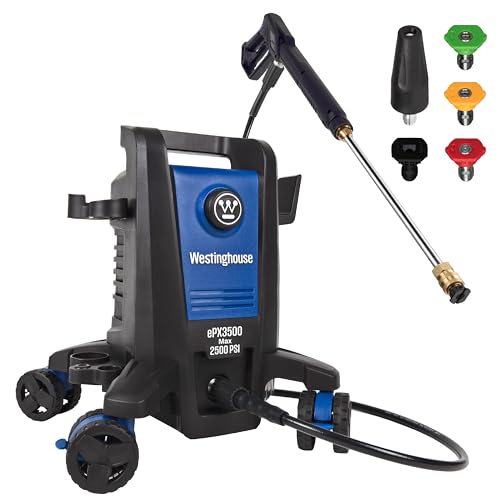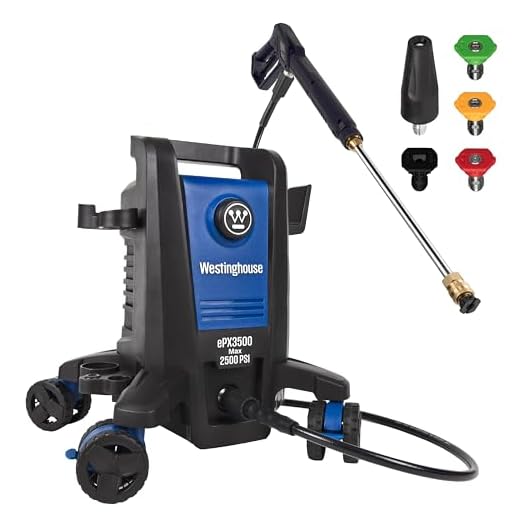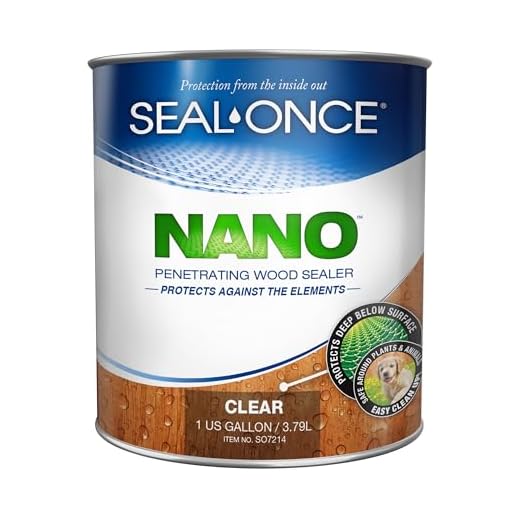Blog
Can You Pressure Wash A Log Cabin

Log cabins are known for their rustic charm and natural beauty. However, over time, exposure to the elements can cause dirt, grime, and mildew to build up on the exterior of the cabin. This can not only detract from its aesthetic appeal, but also lead to structural issues if left untreated.
One popular method for cleaning log cabins is pressure washing. Pressure washing involves using a high-powered stream of water to remove dirt and other contaminants. But can you pressure wash a log cabin without causing damage?
The answer is yes, but with some important considerations. Log cabins are constructed using delicate materials such as wood, which can be easily damaged if the pressure washer is used incorrectly. It is important to use a low-pressure setting and a wide-angle spray nozzle to minimize the risk of causing any harm to the cabin.
In addition, it is crucial to use the right cleaning solution. There are specially formulated cleaners designed specifically for log cabins that can effectively remove dirt and grime without causing damage to the wood. These cleaners typically contain mildewcides and brighteners to restore the natural color of the logs.
When pressure washing a log cabin, it is also important to take proper safety precautions. This includes wearing protective gear such as goggles and gloves, as well as ensuring that all windows and doors are securely closed to prevent water from entering the interior of the cabin.
In conclusion, pressure washing can be a safe and effective method for cleaning a log cabin, as long as it is done correctly. By using a low-pressure setting, the right cleaning solution, and taking proper safety precautions, you can restore the beauty of your log cabin without causing any damage.
The Benefits of Pressure Washing a Log Cabin
Pressure washing a log cabin can bring numerous benefits, both aesthetically and functionally. Here are some key advantages:
- Improved Appearance: Pressure washing can effectively remove dirt, grime, and stains from the surface of a log cabin, restoring its natural beauty. This process helps to revitalize the color and texture of the logs, making the cabin look fresh and well-maintained.
- Prevents Decay: Regular pressure washing of a log cabin can help prevent decay and rot. Over time, dirt, algae, and other contaminants can accumulate on the logs, leading to moisture retention and ultimately causing damage. Pressure washing removes these harmful substances, preserving the integrity of the wood and extending the lifespan of the cabin.
- Eliminates Mold and Mildew: Log cabins are prone to mold and mildew growth due to the damp environment they are often exposed to. Pressure washing effectively eliminates these fungal infestations, improving the indoor air quality and reducing the risk of respiratory issues.
- Enhances Energy Efficiency: A clean log cabin is more energy-efficient. Pressure washing removes debris and grime from the logs, allowing them to effectively insulate the interior and prevent air leakage. This can result in lower energy bills and a more comfortable living environment.
- Preparation for Staining or Painting: If you plan to stain or paint your log cabin, pressure washing is an essential step in the preparation process. It ensures that the wood surface is clean and free from any contaminants, allowing the stain or paint to adhere better and last longer.
Overall, pressure washing a log cabin is a cost-effective and efficient way to maintain its longevity and visual appeal. It is recommended to hire professionals with experience in log cabin pressure washing to ensure the process is done properly and without causing any damage to the wood.
Things to Consider Before Pressure Washing a Log Cabin
Pressure washing can be an effective method for cleaning a log cabin, but there are a few important things to consider before grabbing the power washer and getting started.
1. Condition of the Logs
Before pressure washing your log cabin, it’s crucial to assess the condition of the logs. Check for any signs of rot, decay, or damage. If there are any issues with the logs, pressure washing could potentially cause further harm. In such cases, it’s best to consult a professional for advice.
2. Power Washing Technique
Using the correct power washing technique is essential to prevent any damage to the logs. Start by choosing a lower pressure setting on the power washer and gradually increase it if necessary. Hold the nozzle of the pressure washer at a safe distance from the logs to avoid causing any dents or scratches.
Additionally, it’s recommended to use a wide-angle spray nozzle to evenly distribute the water and avoid concentrated pressure in a single spot.
3. Cleaning Solution
While water alone might be sufficient for cleaning some log cabins, using a cleaning solution can help remove stubborn dirt, grime, and mildew. However, it’s essential to choose an appropriate cleaning solution that is designed specifically for log cabins.
Read the instructions on the cleaning solution carefully and follow them accordingly. Avoid using harsh chemicals or bleach, as they can damage the logs and surrounding vegetation.
4. Protective Measures
Before pressure washing, take the necessary precautions to protect yourself and your surroundings. Wear protective goggles to shield your eyes from flying debris and a mask to prevent inhaling dust and mold particles.
Cover any nearby plants, flowers, or delicate surfaces with plastic sheets or tarps to avoid damage from the high-pressure water spray. It’s also a good idea to wet the surrounding area with water before pressure washing to minimize the risk of dust and debris getting kicked up.
By considering these factors and taking the necessary precautions, you can safely and effectively pressure wash your log cabin, restoring its beauty and ensuring its longevity.
Step-by-Step Guide on Pressure Washing a Log Cabin
Pressure washing is an effective way to clean a log cabin and keep it looking fresh and beautiful. However, it’s important to do it correctly to avoid damaging the wood. Follow this step-by-step guide to pressure wash your log cabin:
1. Gather the necessary equipment
Before starting, make sure you have all the necessary equipment. This includes a pressure washer with adjustable pressure settings, a nozzle suitable for wood surfaces, a garden hose, a ladder, protective eyewear, gloves, and appropriate cleaning solution.
2. Prepare the area
To protect your surroundings and prevent any damage, remove any objects or furniture near the log cabin. Cover plants, flowers, and delicate areas with plastic sheeting or tarps.
3. Test the pressure washer
Start by testing the pressure washer on a small, inconspicuous area of the log cabin. Adjust the pressure settings and the distance from the wood until you find the setting that effectively cleans the surface without causing any damage.
4. Apply the cleaning solution
Mix a suitable cleaning solution according to the manufacturer’s instructions. Apply the solution to the log cabin using a low-pressure spray or a soft-bristle brush. Allow the solution to sit on the surface for a few minutes to loosen dirt and grime.
5. Start pressure washing
Using the appropriate nozzle for wood surfaces, start pressure washing the log cabin. Begin from the top and work your way down, using smooth and sweeping motions. Keep the nozzle at a distance of 6 to 12 inches from the surface to avoid gouging or damaging the wood.
6. Rinse the log cabin
After pressure washing, rinse the log cabin thoroughly with clean water. Make sure to remove all the cleaning solution and dirt from the surface. Pay extra attention to the corners and crevices.
7. Allow the log cabin to dry
After rinsing, allow the log cabin to dry completely before applying any protective finishes or stains. This will ensure that the wood is fully dried and ready for any further treatment.
Following these steps will help you pressure wash your log cabin effectively and safely, restoring its natural beauty and prolonging its lifespan.
Tips for Maintaining a Log Cabin after Pressure Washing
Once you have pressure washed your log cabin and restored it to its former glory, it is important to maintain its condition to ensure its longevity. Here are some tips for ongoing log cabin maintenance:
1. Regular Cleaning
While pressure washing can remove dirt, mildew, and stains, regular cleaning is still necessary to keep your log cabin looking its best. Use a soft brush or broom to remove any loose dirt or debris from the surface. You can also use a gentle cleaning solution specifically designed for log cabins to further clean and protect the logs.
2. Inspect and Repair
After pressure washing, it is important to regularly inspect your log cabin for any signs of damage or wear. Look for cracks, gaps, or loose logs and promptly address them to prevent further damage. Repair any areas that need attention and apply a suitable wood preservative to maintain the strength and integrity of the logs.
Pro Tip: Apply a high-quality wood sealant to protect the logs from moisture, UV rays, and other environmental factors. This will help prolong the lifespan of your log cabin and keep it looking beautiful for years to come.
3. Stain or Paint
If your log cabin is starting to lose its color or you simply want to change its appearance, consider staining or painting the logs. This not only enhances the aesthetics but also provides additional protection against the elements. Choose a stain or paint specifically formulated for log cabins and follow the manufacturer’s instructions for best results.
4. Regular Maintenance Schedule
To ensure the ongoing maintenance of your log cabin, create a regular maintenance schedule. This can include tasks such as cleaning, inspecting, and reapplying wood preservatives or sealants. By sticking to a schedule, you can stay on top of maintenance and prevent any major issues from occurring.
Note: It is important to follow the manufacturer’s recommendations and consider the climate and environment in which your log cabin is located when planning your maintenance schedule.
By following these tips for maintaining your log cabin after pressure washing, you can keep it looking beautiful and ensure its longevity for many years to come.
Hiring Professionals for Pressure Washing a Log Cabin
Pressure washing a log cabin is a task that requires special knowledge and equipment. While it may be tempting to try to do it yourself, hiring professionals is a safer and more effective option. Here are a few reasons why:
Expertise: Professional pressure washers have the necessary expertise and experience to clean log cabins without causing damage. They understand the right pressure levels and techniques to use for different types of logs and finishes.
Specialized Equipment: Professional pressure washing companies have access to specialized equipment that is specifically designed for cleaning log cabins. They have the right nozzles and attachments to ensure a thorough and efficient cleaning process.
Safety: Pressure washing can be a dangerous task, especially when working at heights. Professional pressure washers are trained in working safely and have the necessary safety equipment to prevent accidents and injuries.
Time and Effort: Cleaning a log cabin can be a time-consuming and physically demanding task. Hiring professionals allows you to save time and energy that can be better spent on other activities.
Insurance Coverage: Professional pressure washing companies usually have liability insurance, which provides coverage in case any damage occurs during the cleaning process. This gives you peace of mind knowing that you are protected financially.
Overall, hiring professionals for pressure washing a log cabin is a wise decision. They have the knowledge, equipment, and experience to ensure a thorough and safe cleaning process. So, sit back and relax while the professionals take care of your log cabin.
Questions and answers
Is it safe to pressure wash a log cabin?
Yes, pressure washing can be a safe and effective method of cleaning a log cabin. However, it is important to take certain precautions to avoid damaging the wood.
What type of pressure washer should I use for a log cabin?
It is recommended to use a pressure washer with a maximum pressure of 1500 PSI (pounds per square inch) and a wide-angle spray nozzle. This will help to prevent any damage to the wood.
Do I need to use any cleaning solutions when pressure washing a log cabin?
Yes, it is recommended to use a log cabin cleaner or mild detergent mixed with water. This will help to remove dirt, stains, and mildew from the wood.
Should I hire a professional to pressure wash my log cabin?
If you are not experienced with pressure washing or if your log cabin requires extensive cleaning, it may be advisable to hire a professional. They will have the necessary equipment and expertise to ensure a thorough and safe cleaning.
Can pressure washing damage the caulking or sealant on a log cabin?
Yes, high-pressure water can potentially damage or remove caulking and sealant on a log cabin. It is important to avoid spraying directly at the seams or joints and to be careful around windows and doors. After pressure washing, it may be necessary to reapply caulk or sealant.
Recent Posts
-
How To Connect Soap To Honda Pressure Washer
June 28, 2024 -
A To Z Pressure Washing Scam
June 27, 2024 -
How To Pressure Wash Your Home With A Garden Hose
June 27, 2024 -
Where Can I Buy Honda Pressure Washer Parts
June 25, 2024












